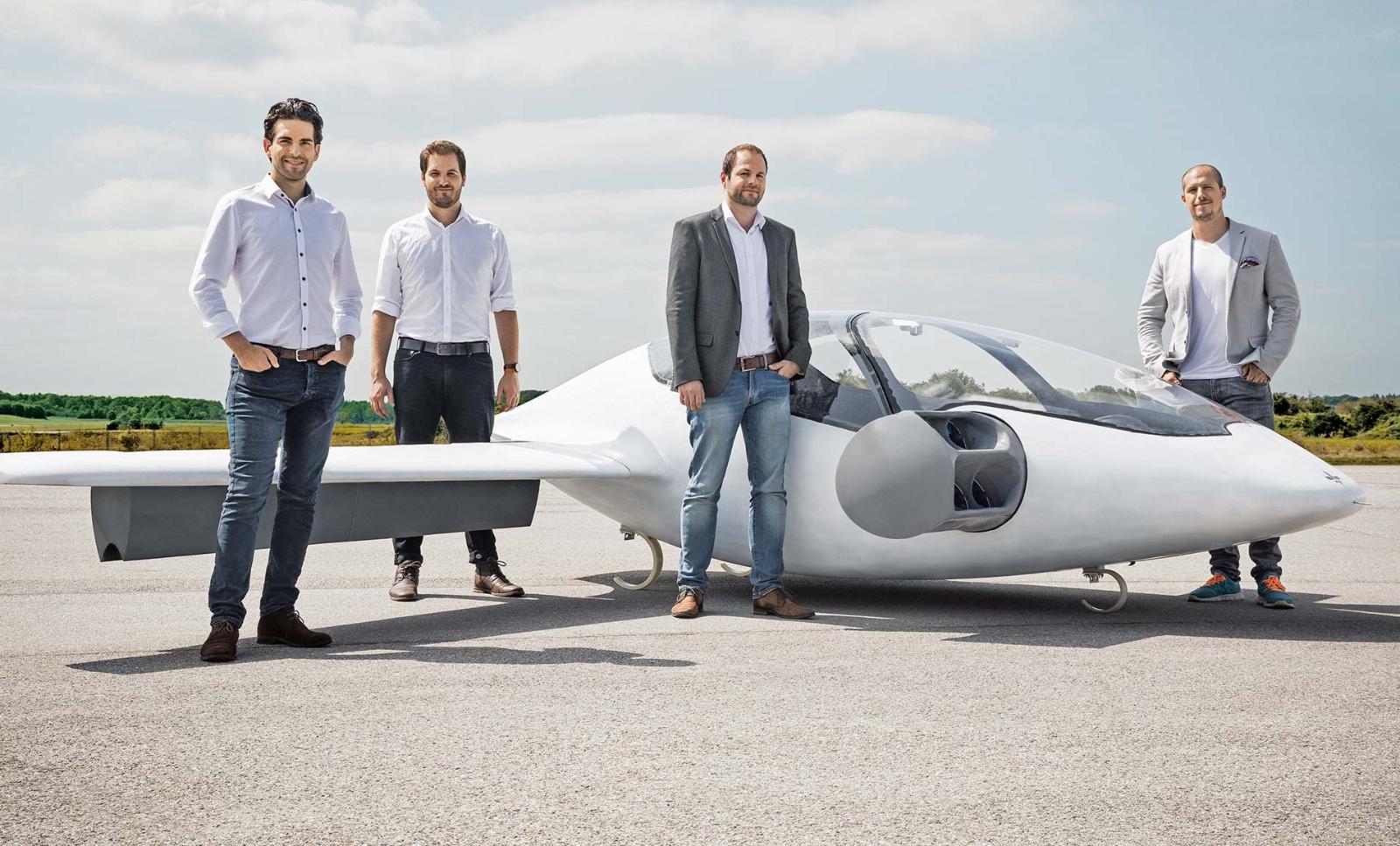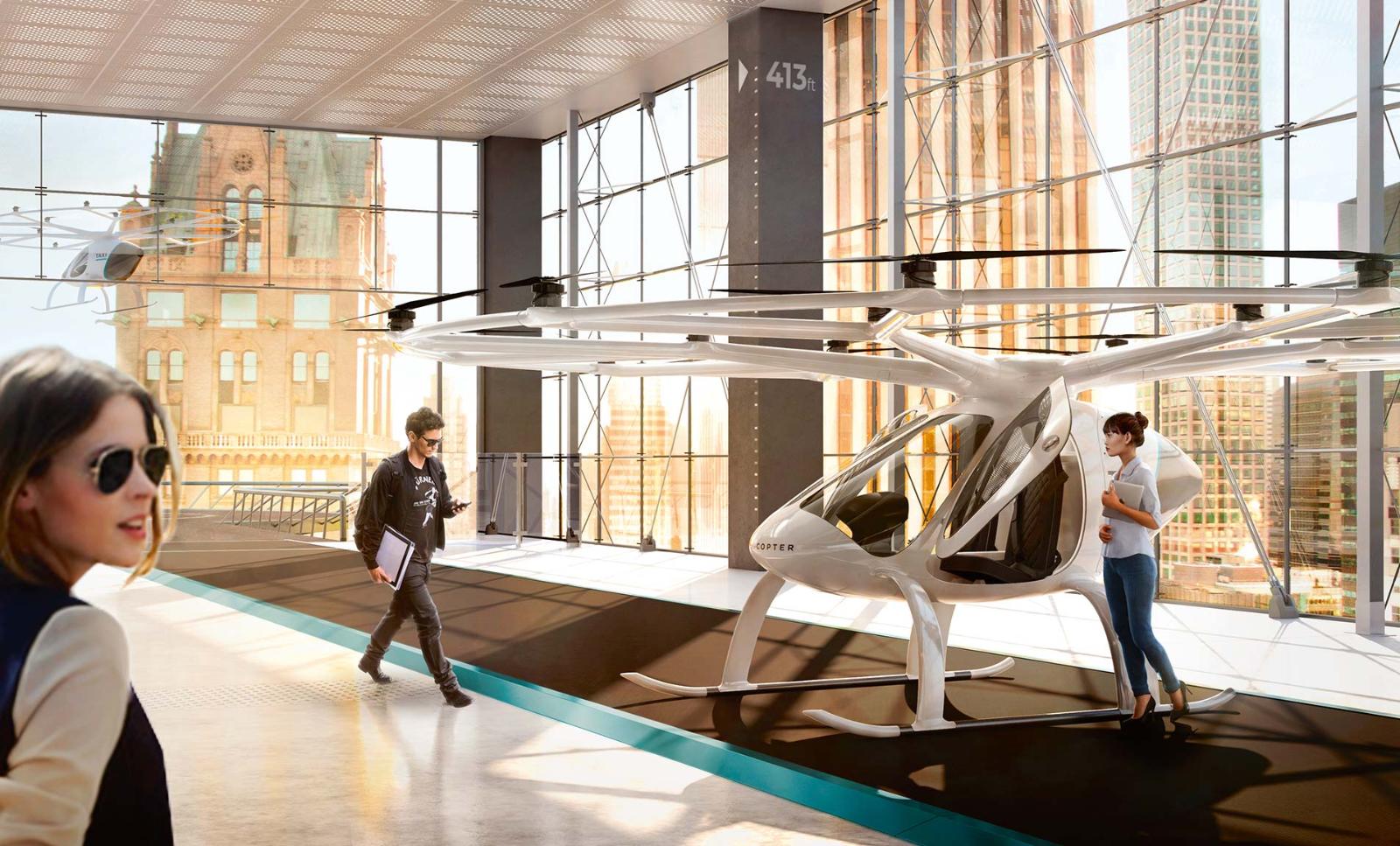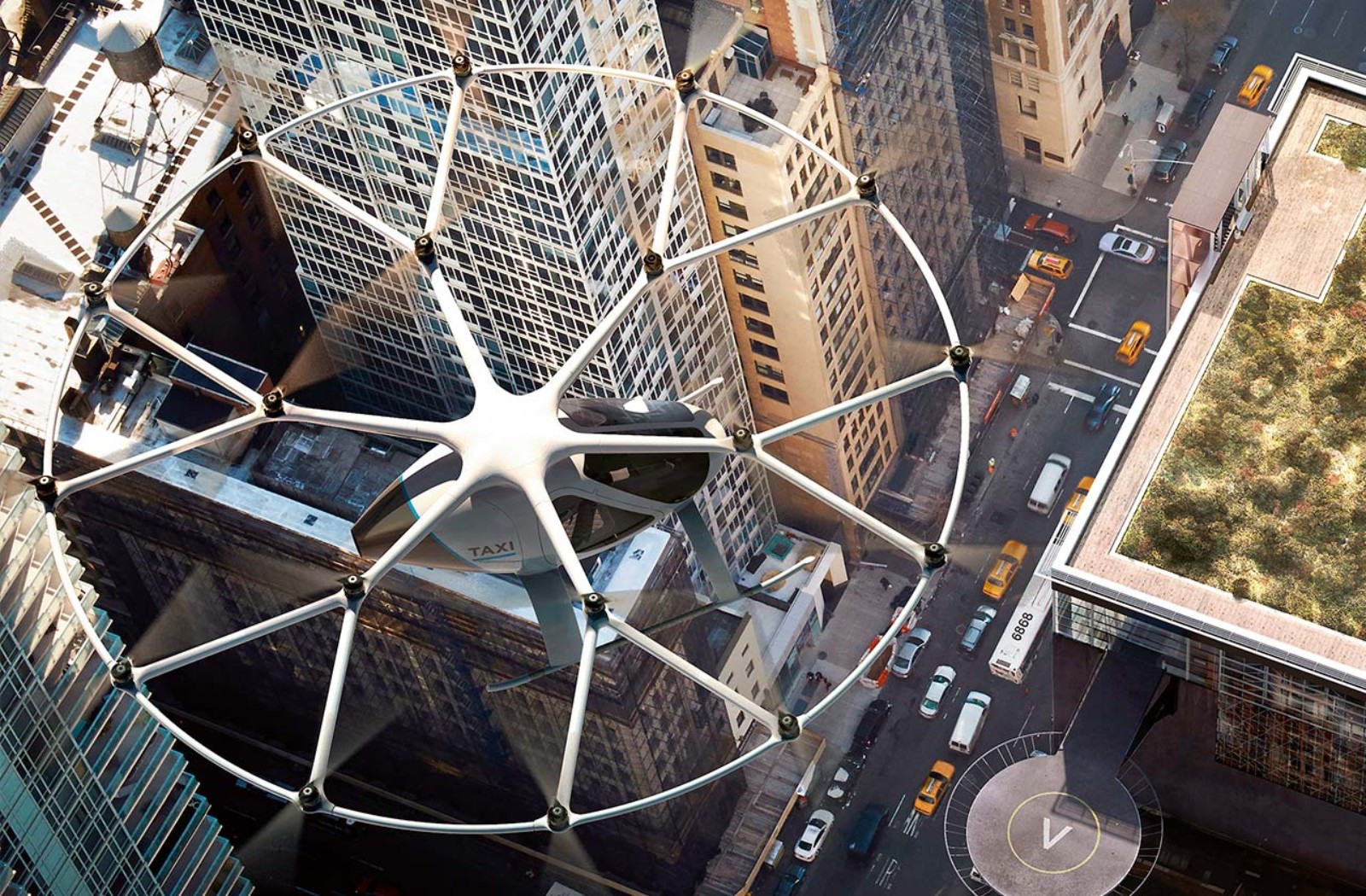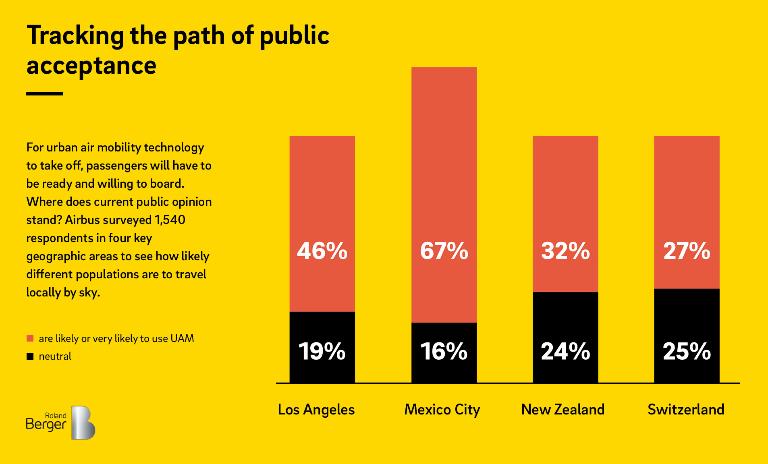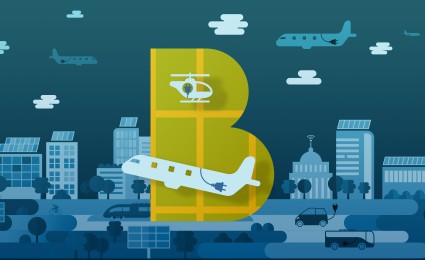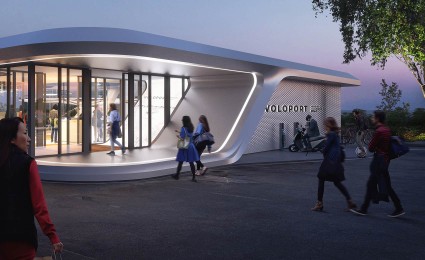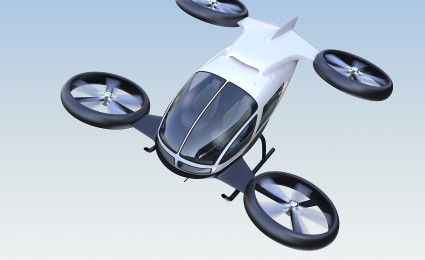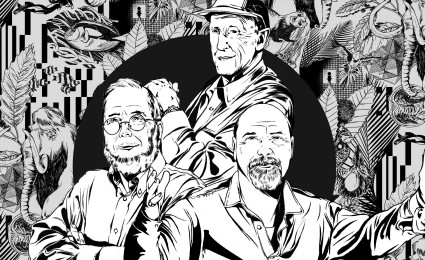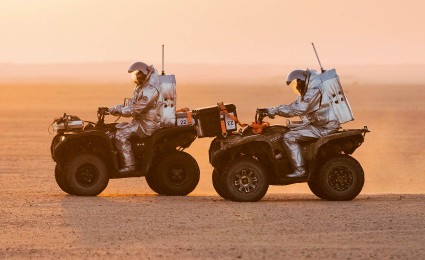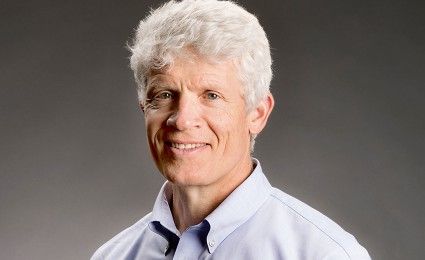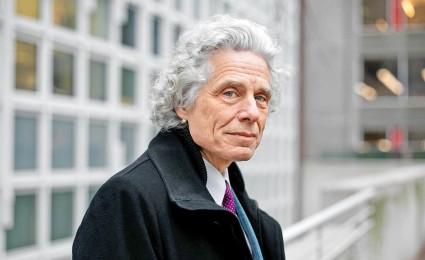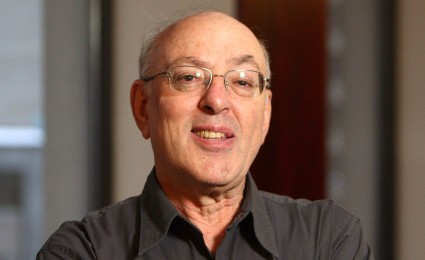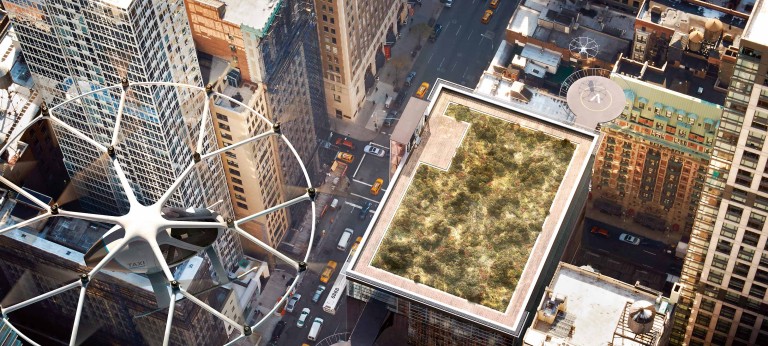

Think:Act Magazine "Own the future"
Looking at the future of urban air mobility

Think:Act Magazine
Startups are pioneering a new industry that’s looking to take short-distance travel to the skies
From startups to aerospace giants, a growing number of companies are working on technology that could change your perspective on urban mobility. What will it take to make short-distance air travel just another normal part of city living?
We've probably all done it. The streets are gridlocked, the cars ahead inching their way forward, if they move at all. You gaze out of the window, look upward and imagine yourself soaring over the congested streets below, arriving unstressed at your destination in a matter of minutes. Then a horn blares and reality punches you in the face. Sadly, science fiction won't save you from your traffic jam. Flying taxis don't exist.
But that might soon change. Around the world, companies from aerospace giants such as Boeing and Airbus to well-funded startups are working on the technology needed to create a new form of mobility. "It almost feels like the project Apollo of our generation," says Brian German, aerospace professor at the Georgia Institute of Technology. Test flights for prototypes are already underway and the dream of flying taxis is expected to become a reality within a decade. Fleets of electric-powered aerial vehicles will carry people and goods through and between cities in minutes rather than hours. Need to send a package? Hail a drone . In a hurry to get home? The next air taxi leaves shortly. "In particular, smaller drones could have a transformative impact on how future populations live, do business and interact," says Carlo Ratti, architect, engineer and director of the MIT Senseable City Lab. "They transcend geographical barriers without the need for large-scale physical infrastructure."
With ground transportation in many towns and cities stretched to the limit, urban air mobility (UAM) could provide a much-needed alternative. Since 1950, the world's urban population has ballooned from 751 million to 4.2 billion. By 2050, urban areas will be home to a further 2.5 billion people, with more than two-thirds of the total world population living in cities. Urban infrastructures are struggling to adapt, taking a toll on commuters, the environment and our economies. In London, drivers lost an average of 227 hours in 2018 due to congestion; traffic in the United States cost the country $87 billion in lost time last year.
"There's excitement, but there's also apprehension around the unknown... As a new industry, we have plenty of work to do."
Many cities have tried to fine-tune systems to alleviate the issues, but without more fundamental changes, the scope is limited. By utilizing three-dimensional airspace, UAM could lower pollution, reduce congestion on the ground, cut travel times and even reduce traffic accidents. A combination of recent advancements is driving this change, including lightweight composite materials and improvements in noise reduction mechanisms and communications systems. Perhaps most important, however, are the leaps forward in power-to-weight ratios for batteries that will make electric flight feasible across short distances.
How exactly these vehicles will fly will depend entirely on what they will be used for. To operate in dense urban areas, vertical take off and landing capabilities are a must, eliminating the need for runways. Beyond that, multicopters or quadcopters – something like a helicopter-drone hybrid – offer excellent hovering efficiency, making them ideal for short inner-city hops and deliveries, while fixed-wing vehicles will be better suited to faster flights across longer distances.
European aerospace manufacturer Airbus unveiled its vision for shared urban air travel in March 2019. CityAirbus is being developed with input from Audi and Siemens and will begin flight testing this year. Airbus expects its four batteries and eight rotors will give the vehicle a cruise speed of 120 km/h and a range of 30 kilometers. This is just part of the company's growing portfolio of UAM projects. Vahana, a single-passenger vehicle, has already made its first test flights in the United States, while Airbus UTM looks at how new forms of air traffic management will enable UAM to operate safely and efficiently. "The world is rapidly urbanizing, and ground infrastructure alone cannot meet the demands of tomorrow," said Airbus CEO Tom Enders of his company's UAM activities in a press release. "Adding the sky as a third dimension to the urban transport networks is going to revolutionize the way we live."
Also hoping to play a part in this revolution is Lilium, an ambitious German startup based near Munich. Founded in 2015 by four students, the company attracted leading figures from the worlds of aerospace, autonomous driving and design and has raised more than $100 million in funding. Its two-seater prototype, the Eagle, started test flights in 2017. Lilium has been working on a five-seater version that it expects to unveil in 2019, with entry into service planned for 2025. “Our jet will fly 300 kilometers in just one hour,” says Lilium’s Head of Communications Oliver Walker-Jones. “We believe connecting not only cities but entire regions will make a major difference to the use case.” Cutting travel times by a factor of four, emission-free flights could take people from countryside homes to city-center offices in no time at all.
More than 20 other manufacturers have joined Lilium and Airbus in this increasingly crowded market. In January, Aurora Flight Sciences, a subsidiary of Boeing, announced that it has conducted initial flight tests for its own autonomous UAM vehicle. Other established players like Bell and Sikorsky are also getting in on the act. Another German startup, Volocopter, has carried out test flights in Dubai and boasts investment from the likes of Daimler and Intel. Uber also wants to bring its ride-sharing approach to the sky and is working with a variety of partners, including Boeing and NASA, to start flights in US cities from 2023. Before that becomes reality, however, there are significant challenges ranging from technological limitations to regulatory hurdles that must be overcome.
Advancements in lithium ion battery technology may have brought the dream of electric urban air transport closer to reality, but as Brian German explains, there is still plenty of work to be done. "Right now, we're still 30-50% below the level required for passenger flights of any reasonable distance. I'm confident we'll achieve a viable capability for traveling in and around cities in the near future, but going much beyond 100 kilometers will likely require a new breakthrough."
Electric propulsion is a fundamental pillar of UAM, not just in terms of emissions, but also noise. Lilium claims the noise of its jet will blend into existing background noise during takeoff and landing. No problem in isolation, skeptics say, but scale that up to hundreds of vehicles in the air at the same time and things may sound a little different. "UAM is exciting, but I don't see it as a feasible solution for carrying passengers. There is no way to achieve the lift required for larger passenger vehicles without a vast amount of both noise and air disturbance," says Carlo Ratti. "A city like New York would become unlivable." For that premise to be tested, though, air traffic management has to be able to safely handle a much busier urban airspace. The existing system is tailored to commercial flights for fixed-wing aircraft and relies heavily on human task execution. Airbus says we are already close to exceeding its capacity – and that's just for manned flight.
While some may initially fly with pilots, all the UAM vehicles currently under development aim to eventually travel autonomously. This will not only reduce operating costs, but also improve safety and airspace efficiency, enabling different aircraft to serve multiple purposes. Look out of the window of your flying taxi and you may see dozens of small, pilotless drones whisking deliveries past. For a society that is just beginning to come to terms with autonomous driving, public perception may be the most important factor behind UAM's success. "It's critical," says Oliver Walker-Jones. "We absolutely recognize that if we don't get that right, then the whole thing falls flat. Cost, noise, safety, privacy: There's excitement, but there's also apprehension around the unknown. That's understandable. As a new industry, we have plenty of work to do."
To create a new industry, dialogues and alliances between businesses, authorities and communities are crucial. As part of its Innovation Partnership on Smart Cities and Communities, the European Commission has set up a UAM Initiative to work on demonstration projects in order to increase public acceptance. In total, it is estimated that more than 60 cities around the world currently have active programs to further UAM initiatives.
Keeping a focus on affordability, Uber is working on UAM prototypes that may enable shared aerial journeys between "skyports" that can handle 1,000 takeoffs and landings per hour as early as 2023.
Rather than passengers, most early use cases are focused on autonomous delivery vehicles as a means of testing in a lower-risk environment. In Switzerland, for instance, lab samples are being flown between local hospitals by drone, while in Iceland, drones deliver parcels from online retailers to customers. Similar projects are scheduled in Finland, China and the United States.
The learning curve is set to be a steep one, says Brian German. "There's a pretty wide gulf between testing prototypes and operating vehicles commercially. It's great that we're starting to see things fly, but the pathway to certification, particularly for passenger vehicles, is going to take some time." Precisely who those passengers will be remains to be seen. Veteran aerospace industry expert Richard Aboulafia has been a vocal critic of UAM, saying it is "decades away from readiness."
Manufacturers, however, are understandably more optimistic. By 2025, Lilium hopes to offer a trip from JFK airport to midtown Manhattan for around $70. By road, the journey can take about an hour, but by air it would take just five minutes. And that is ultimately UAM's biggest selling point. For many, time is the most valuable commodity there is – and who wants to spend it in traffic?
Curious about the contents of our newest Think:Act magazine? Receive your very own copy by signing up now! Subscribe here to receive our Think:Act magazine and the latest news from Roland Berger.


